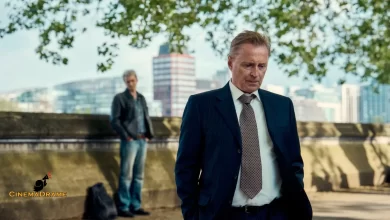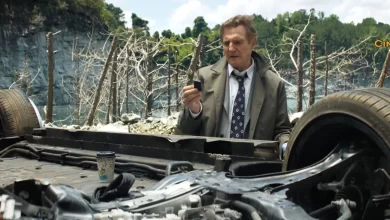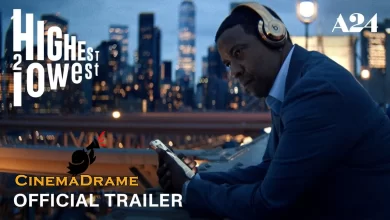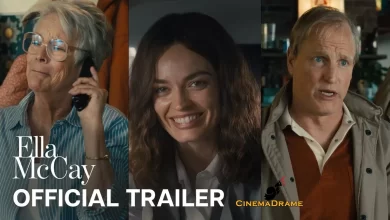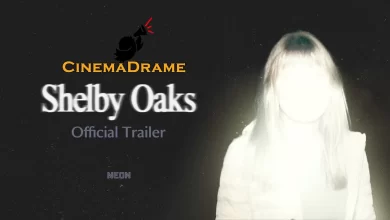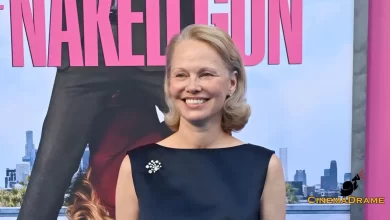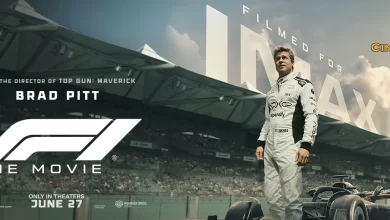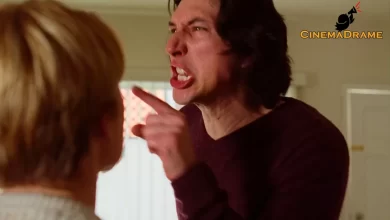Sahebe Pooyan mehr’s Critique of Oktay Baraheni’s “Oldboy”: A Standout Work in the History of Iranian Cinema

According to CinemaDrame News Agency, film critic Sahebe Pooyan mehr, in an exclusive commentary, has reviewed “Oldboy,” the latest work by Oktay Baraheni, writing:
*”Oldboy” is a film that challenges the very notion of goodness. It is a work that has sparked considerable controversy—and interestingly, its absence from the competition section of the 43rd Fajr Film Festival did not marginalize it, but rather contributed to its increased visibility. Personally, I believe that had it competed, it would have claimed most of the awards; it should have been included precisely to raise the quality standard of future works. I consider Baraheni’s film among the finest in the history of Iranian cinema: purposeful, with minimal flaws throughout, it compels the audience to stay engaged for its full 190 minutes, eager to see how the story resolves. In a single phrase, the film asks:
Is it truly good to be good?
The film’s content is powerful and multilayered. It portrays a fractured family under the domination of a tyrannical father, serving as a microcosm for a patriarchal society—and, from a political angle, a dictatorial regime. The narrative also delves into psychological themes, advancing its various subplots through symbolic formalist cinematic techniques.
The screenplay is structurally sound and coherent, though it could have been more concise without sacrificing meaning. From the outset, the film introduces its characters, quickly acquainting the viewer with Gholam Bastani’s family, dispelling ambiguity and establishing a clear setting—delivering an effective opening sequence.
Ali is the protagonist: he confronts the challenges before him, seeking resolution, but compared to the antagonist, he is not particularly strong, at times seeming passive in his pursuit of his goals. Gholam Bastani’s prominence in the story steers the narrative toward a noir sensibility—a femme fatale named Rana alongside Gholam sets the stage for this style. However, Ali’s presence disrupts the convention, and this lack of strict adherence to genre is evident throughout the script.
The first plot point occurs when the father discovers his son’s affection for Rana. Here, the central conflict emerges and the rivalry between protagonist and antagonist takes shape—vividly and grippingly. I appreciated the writer’s courage in tackling a subject that few dare to address.
Though lengthy, the film’s middle section does not test the viewer’s patience; it continuously raises new issues, even incorporating moments of wit to intelligently advance the plot, building up to the main climax—when Gholam, at home with his sons Ali and Reza, confesses. The depiction of this moment is both skillful and effective.
The second turning point arrives when Ali kills his father, ending the conflict and restoring equilibrium to the narrative.
The film’s final sequence is exceptionally strong—so much so that it hardly allows the viewer to blink, heightening suspense through a slow drip of information, with each knot unraveling scene by scene, all without relying heavily on dialogue.
Money serves as the connective tissue throughout the film—it is referenced constantly and stands as the main driver of all events, especially evident in the final scene, demonstrating the filmmakers’ effective use of this motif.
The core of the narrative is a love triangle between father, son, and Rana—Oktay Baraheni’s engagement with the Oedipus complex is clear. I use the term “engagement” deliberately: the writer takes inspiration from the theory without employing it in Freud’s original sense.
The film also boasts a strong subplot: Gholam’s refusal to collaborate on building his own valuable house, which keeps the audience guessing until its resolution seamlessly ties into the main plot, surprising the viewer.
In my view, dialogue-writing is among the most sensitive aspects of screenwriting, as it shapes both the transmission of information and narrative progression. The writer excels here, using concise dialogue to convey core messages and introduce characters without overwhelming exposition. For instance, the opening exchange between Reza and Ali fully establishes their relationship with Gholam, while a later scene between Ali and Rana reveals her psychological turmoil. Overall, the script is precise and well-executed in this regard.
Despite its minor weaknesses, the “Oldboy” script succeeds for two main reasons: skillful planting of narrative seeds and an abundance of engaging suspense. From the film’s outset, through the brothers’ conversation about what it takes to kill someone, suspense is established immediately, cleverly nudging the audience to suspect that Reza might kill his father. Another key “planting” is Gholam’s two separate remarks doubting that Reza is his biological son.
The film’s characters are vivid and tangible, clearly the result of both painstaking design and deep psychological research. Reza, the younger son, is outwardly talkative and optimistic, but vulnerable. Ali, the elder, is his opposite: quiet and cultured on the surface, but his traumatic upbringing has made his true self starkly different. He stands up to everything that hurts him, speaks his mind, and—despite initial reluctance—kills his father. Ali’s courage is foreshadowed in two scenes: first in the bookstore where he argues with the owner’s brother, and second at a party with Rana where he boldly confronts a film critic, revealing the depth of his suppressed rage. Although the intention was to make Ali a multilayered, complex character—and while he is believable—the earlier-mentioned passivity prevents full realization of this goal.
Gholam Bastani is the most prominent and, arguably, best-drawn character—a symbol of dictatorship. He wounds and destroys, living solely for self-interest and power, making everyone else’s lives miserable. Rana, meanwhile, likely suffers from borderline personality disorder: she craves attention, and in one scene, to relieve her psychological pain, cuts her hand with scissors in the bathroom—a fresh wound among many. Her persistent ambiguity further underscores her condition.
The cast performs admirably, fully inhabiting their roles, mastering the tone and inflection of their characters. Hamed Behdad’s oscillation between madness and vulnerability makes his character feel authentic and menacing. Leila Hatami, with her familiar calm demeanor and soothing voice, fits her role, even if it feels somewhat repetitive. But it is impossible not to single out Hassan Pourshirazi’s remarkable performance: he so thoroughly embodies Gholam Bastani that we forget the actor entirely. His work here is extraordinary, and it is a shame he was not especially honored. Observe his acting in the final scene—moving his hair from his face with a knife like the Joker, or in the moment where his head, caught between two horns in the half-light, evokes the devil himself. Or the closing scene, where all his rage, hatred, and regret play out as he sits on a pillow, looming over Reza’s face—all of this the result of a lifetime of craft and knowledge, which must be appreciated.
The makeup team has been superb, from the appearance of Gholam and his friend Ghamkhar (both addicts) to Rana’s understated elegance—all serving the main storyline.
The score is highly effective, from extended silences to sounds evoking inner voices, and tracks that align with the characters’ thoughts at key moments, all helping the audience to better grasp the story’s truths.
Editing is mostly strong. While some extraneous scenes remain (which I attribute to direction), the film is generally cohesive, maintaining rhythm for the most part—even when pacing slows, the editor manages to keep the audience engaged.
The production design of “Oldboy” is among the best and most detailed I’ve seen. From the outset, the disordered, unkempt house physically embodies Gholam’s character and signals a family in disarray, led by a morally filthy patriarch. Mythic paintings on the walls (including at Ghamkhar’s shop) hint at the characters’ behavior throughout, such as the depiction of Rostam and Sohrab. Note also the scene where Gholam dances with a sword among his friends—the sword signifying both regained power and sexual prowess. Other settings, from streets to interiors, are carefully chosen to situate the film in its historical and geographic context. Anahita Teimourian’s work here surpasses all expectations.
Costume design, too, succeeds both in defining social class and psychology through color: Ali is dressed in black for almost the entire film (except for one or two brief scenes in navy), symbolizing power and endurance. This wardrobe choice signals, in cinematic terms, “who wears the pants.” Gholam, in his first scene with Rana at home, wears light blue, representing the faint hope of an old man; in the final scene, a green shirt, alluding to ambition, jealousy, and his boundless desire for Rana; and in the sword dance scene, black again, denoting inner strength. Reza, when confronting his father, dons black for the first time—marking the regaining of power he’d lost. Rana is seen in black in every significant scene, reflecting her self-image as someone who can achieve anything she desires. In sum, the costume designer makes superb use of color to reinforce narrative themes.
Lighting is similarly thoughtful—sunlight marks the passage of time, and Gholam’s house is usually dimly lit, with yellow bulbs evoking the faint hope of his sons amid the chilling darkness of their home. Green tones are used liberally, conveying Gholam’s jealousy toward his son, a motif that haunts the film. These choices are consistently effective.
Oktay Baraheni demonstrates both vision and mastery. I have heard rumors that “Oldboy” is a copy of Park Chan-wook’s South Korean film, but that claim is baseless. Baraheni’s direction is impressive, despite occasional missteps such as retaining unnecessary scenes or unresolved narrative seeds—for example, the unexplained mention of Khosrow near the end. It would have been better to revise these issues and further trim the script, as this was certainly possible. Yet, even with these caveats, we are presented with a strong film. Thoughtful framing and blocking immerse us in the Bastani family’s world, making time slip away unnoticed. Baraheni makes effective use of his actors—Hamed Behdad, for example, minimizes his trademark catchphrases to craft a distinctive character voice. It should not go unsaid that “Oldboy” nails its cinematic execution: every element is placed precisely within the frame, culminating in a truly professional and breathtaking finale.
Kudos to the entire team.
